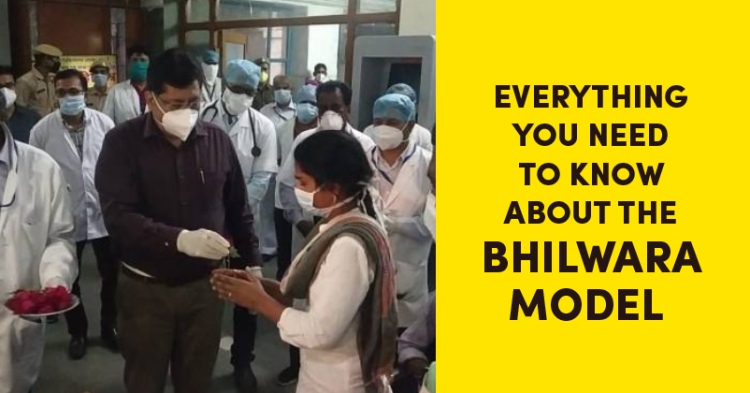From being one of the most affected COVID-19 districts in India to controlling the situation in the last 10 days, Rajasthan’s Bhilwara has, indeed, come a long way in its fight against the novel coronavirus pandemic. The popular textile town reported its first COVID-19 case on 19th March 2020 and then quickly emerged as a hotspot, reporting 27 cases, becoming the worst-affected district in Rajasthan. Soon after Rajasthan’s border was sealed in order to curb the inflow of people, many of whom could be carriers of the virus.
Seeing the rapid growth in new infections, the district administration sprang into action swiftly and pursued an aggressive model of containing the spread of this virus, involving a variety of measures.

Commercial Lockdown
One of the first moves, while medical interventions were being made, was to get people off the streets. With many large industries involved in textile manufacturing, the order to shut down industries quite literally put the lid on all industrial activity and employment in Bhilwara. Realizing the repercussions on the economy and law and order due to the ban on large industries, the district administration swung into action the very next day ordering the district industrial in charge to talk with all establishments urging them not to entrench workers and ensure a part of their wages were paid.
Quarantine Facilities
The district administration took over four private hospitals and 27 hotels with 1,541 rooms. These measures began bearing fruit as the town has not reported a new case of COVID-19 since 30th March.

Thorough Disinfection
In addition to these steps, disinfection drives were conducted all over the town. Of its total 27 cases, 17 have already recovered since then, bringing the number of active cases in Bhilwara at just ten, including two deaths (due to comorbidities), eleven patients discharged while another seven are recovering quickly.
Rigorous Screening & Self Quarantine
By 25 March’20, there were 63 patients in the Intensive Care Unit (ICU) of the hospital in Bhilwara, some of whom would later test positive for coronavirus. The hospital’s records were seized and teams sent to track the families of all 63 patients in villages across the district. Their families were subject to coronavirus tests and areas surrounding their homes sprayed with disinfectants. All patients were immediately ordered to be tested.
By March 26, more than 6000 people had been tested and were either asked to self-quarantine or admitted to the nearest facility.
The success of Bhilwara in containing the transmission of coronavirus has now prompted the central government to adopt the ‘Bhilwara model of containment’ on a nationwide scale, particularly with the most-affected 62 districts in different states of India. The government is planning a targeted approach to tackle these cases as most of them are concentrated in these few geographies. It is in this context that the Cabinet Secretary Rajiv Gauba recently urged states to adopt the ‘Bhilwara model’ in their efforts to contain the community spread of COVID-19.
Source: InvestIndia
















